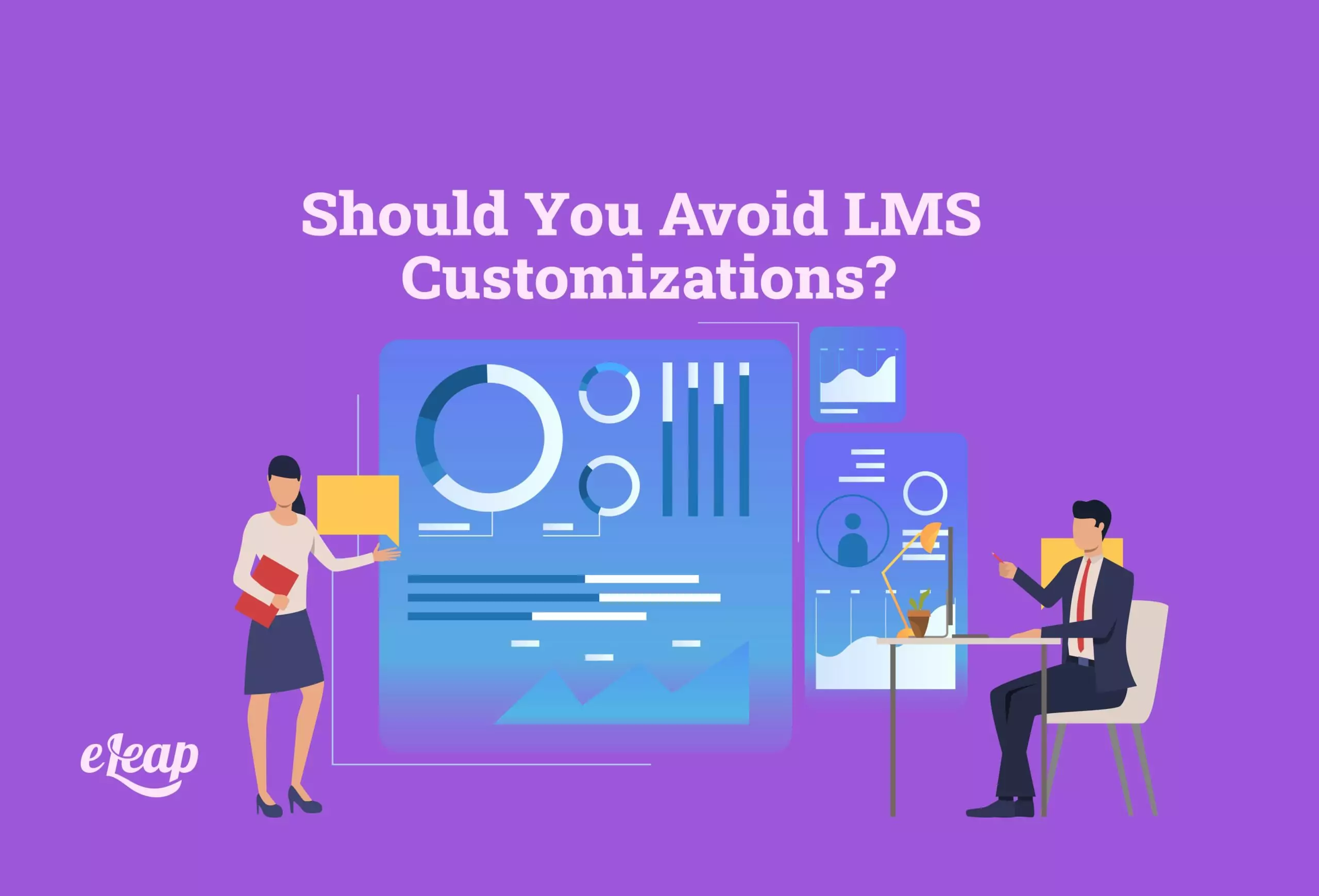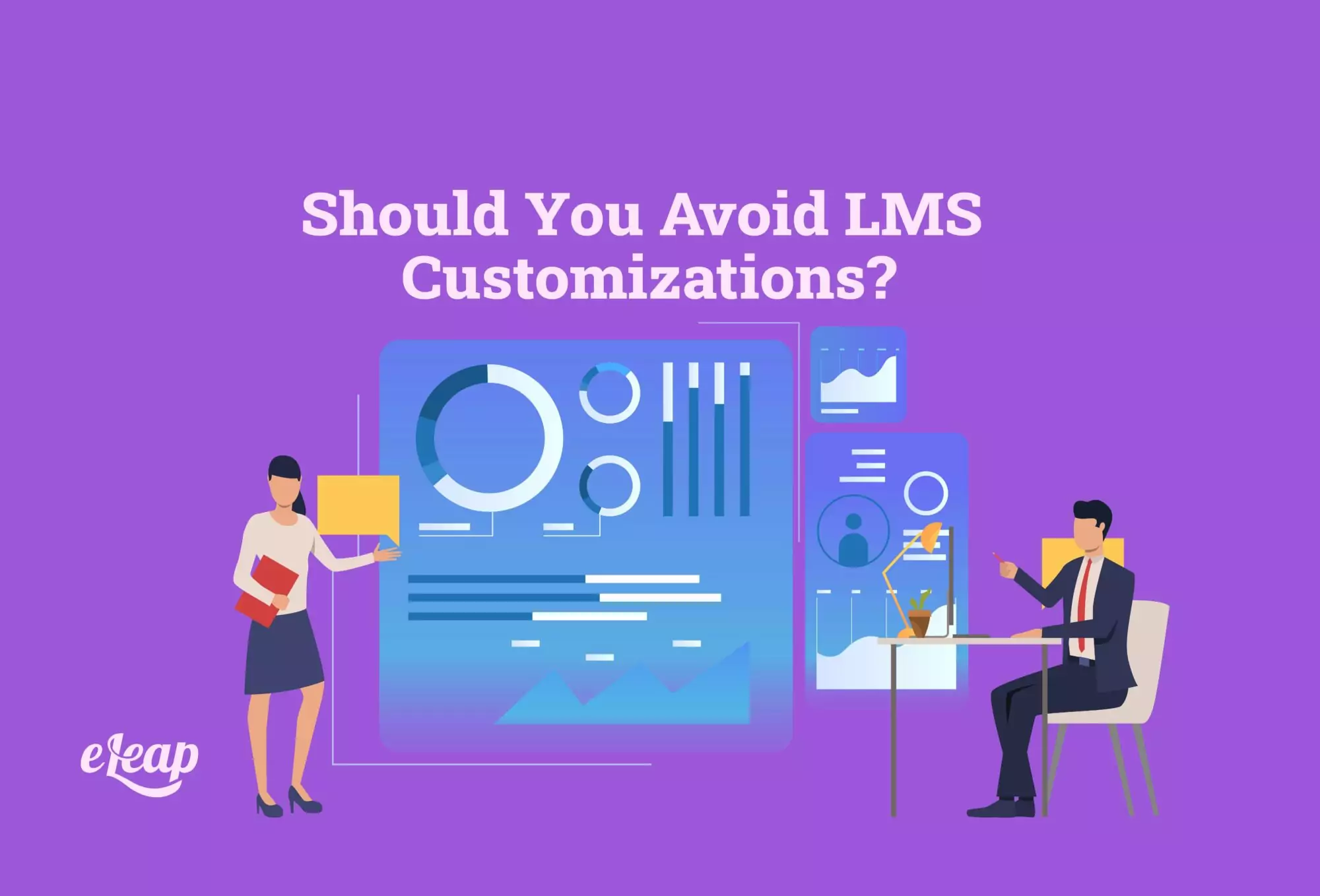Should You Avoid LMS Customizations?

LMS customizations sound great to have at first. Plus, trends show us that customized LMS platforms are becoming increasingly popular. However, is there any concrete evidence to show that these customizations will benefit your company specifically?
It can be easy to be forced into requesting customizations that don’t make sense for your company. This is especially true if these customizations are seen as trendy or cutting edge. Sometimes, customizations can further complicate a process that’s aimed at simplifying something for your organization.
Still, certain organizations press forward with requests for customization, even when it doesn’t benefit them in the long run. This article will address how these things can be avoided.

Why Should I Avoid LMS Customizations?
Sometimes you just can’t avoid customizations, and that’s okay – if they’re truly warranted. Examine your workflows before diving into customization. Customization is necessary if you find that a particular workflow can’t be mapped onto a standard feature.
However, you should only make this decision after considering several important things regarding the LMS.
LMS Customizations Add Additional Costs
Customizations and additional features for your LMS aren’t free. These require additional work, and additional work requires additional money.
Depending on how many hours it takes to develop these customizations, the price increases. Things like script size, functionality, and how complicated the customization is will also influence the final cost.
You need to weigh whether this customization will pay for itself. Is it adding to the overall profitability of your company? Will it teach employees things that couldn’t be learned otherwise?
If you feel like the customization doesn’t pay for itself in the long run, there’s no need to spend the additional money. You could put funds into other parts of the LMS budget that are much more beneficial.
Consider Maintenance and Support
Customizations become a real headache when it comes to maintenance and support. Many of them are hard to learn and implement, so the need for constant support is great, especially in the beginning.
When customizations are added to a platform, only the builder knows the specific codes and scripts regarding said customizations. Programmers that work for the provider know codes and scripts standard to the basic features of the LMS platform.
This means that whenever a breakdown of support is needed, only the builder will be able to provide the necessary assistance to power through this breakdown. This is where things can get really expensive.
You should also consider the fact that LMS platforms need updating every so often. This means that when updates are warranted, your custom scripts will also need to be updated. Guess who knows how to do the updating? That’s right, the original builder.
It’s easy for your provider to forget things like this when recommending customizations to your platform. In many cases, you cannot forget to take these things into account. It could cost you a fortune in the long run.
This doesn’t include the additional time that it could take to figure out issues with your customizations. What would usually be a hassle-free support call turns into extra effort on everyone’s part that could take days to resolve.
You Could Miss Important Features
When the vendor unveils new features when it’s time to update the platform, you could potentially miss out on these features. The updates could conflict with your customized scripts, and it’s possible they can’t be implemented if the original builder isn’t available.
There’s also a chance that the new features can’t be implemented at all because of a custom script. This could take place regardless of the knowledge the original builder has.
This would mean your organization’s LMS build would need a complete overhaul to accept the new updates. Either that, or you’d have to scrap your customizations or the new features. It could be a tough choice to make.
Customizations Are Clunky and Heavy
When customizations are added to your platform, sometimes they’re clunky and can make the platform lag. Additionally, the customizations may cause your platform to have a hard time when it comes to integration on other platforms.
More specifically, these platforms normally have trouble when it comes to switching to mobile features. This could completely jeopardize your platform’s ability to let employees learn anywhere and study at their own pace. Are you truly willing to sacrifice the “learn as you go” model for one or two customizations?
No Change in Workflows
A smooth development process has a lot to do with the workflow and logging all changes involved. This is no problem with a learning management system with minimal customizations and diversions.
A change in the workflow of your platform could make your customization useless in some cases. Changes in workflow take place all the time. Consider the fact that a workflow that’s relevant to your company today could be useless next week.
Because of the sheer number of changes in workflow and changes implemented to a platform, are you willing to risk the price you paid for customization? Once again, these changes and updates could spell certain doom for your customization.
There’s a very real possibility that all the money you paid for said customizations could go down the drain in the event workflows are changed, or updates are necessary.
It’s important to remember that sometimes when you’re dealing with things like LMS, less is more. Sure, fancy customizations and extra features look very appealing in the beginning. Advertisers and providers do a great job of romanticizing these highly-technical customizations.
However, when you get down to brass tacks, do you really need the additional fancy stuff? Stick to what your organization needs: the meat and potatoes. In the end, this is what’s going to bring your organization to the next level. Working with extra features you don’t need or causing headaches will get you absolutely nowhere.
As we stated previously in the article, it doesn’t make a lot of sense to complicate a process that’s intended to simplify an important process in your organization’s structure. This can hardly be considered money well spent. Contact us today to get your free consultation!